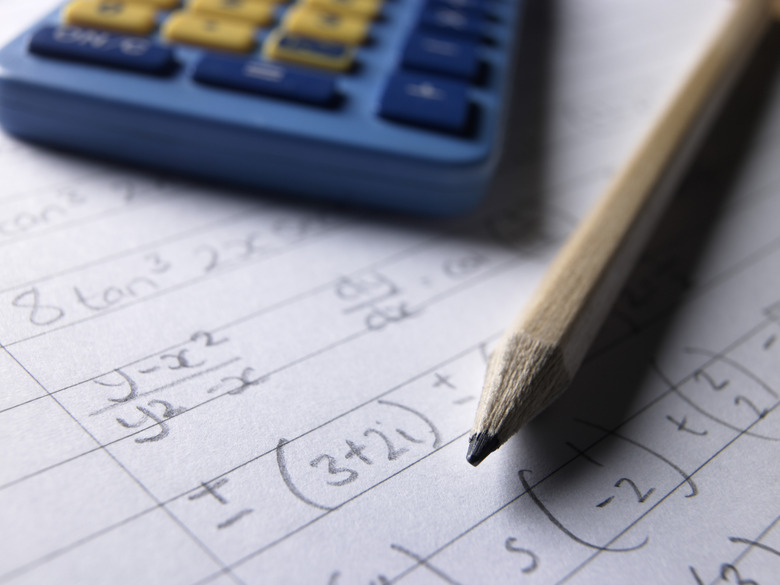How To Make A True Equation
A true equation is a mathematically accurate equation. A false equation is an incorrect equation; it says something erroneous or untrue. For example, 2 = 3 is a false equation, because 2 and 3 are different numerical values. To make a true equation, check your math to make sure that the values on each side of the equals sign are the same.
Step 1
Ensure that the numerical values on both sides of the "=" sign are the same to make a true equation.
For example, 9 = 9 is a true equation. 5 + 4 = 9 is a true equation. 6 + 3 = 9 is a true equation. Therefore, 5 + 4 = 6 + 3 is a true equation.
Step 2
Add any quantity to both sides of the equation to have a true equation.
For example: 5 + 4 + 2 = 6 + 3 + 2
Step 3
Subtract any quantity from both sides of the equation to have a true equation.
For example: 5 + 4 – 2 = 6 + 3 – 2
Step 4
Multiply any quantity by both sides of the equation to make a true equation.
For example: 7(5 + 4) = 7(6 + 3)
Step 5
Divide any nonzero quantity by both sides of the equation to make a true equation.
For example: (5 + 4)/3 = (6 + 3)/3
Exercise caution when dividing by 0. 8 = 9 is a false equation 8/0 = 0 and 9/0 = 0 are both true equations Therefore, 8/0 = 9/0 is a true equation.
0 is not a good value to use to create and check true equations because the rules of 0 are different than those of other numerical values.
Cite This Article
MLA
Hanly, Samantha. "How To Make A True Equation" sciencing.com, https://www.sciencing.com/make-true-equation-5868925/. 24 April 2017.
APA
Hanly, Samantha. (2017, April 24). How To Make A True Equation. sciencing.com. Retrieved from https://www.sciencing.com/make-true-equation-5868925/
Chicago
Hanly, Samantha. How To Make A True Equation last modified March 24, 2022. https://www.sciencing.com/make-true-equation-5868925/
